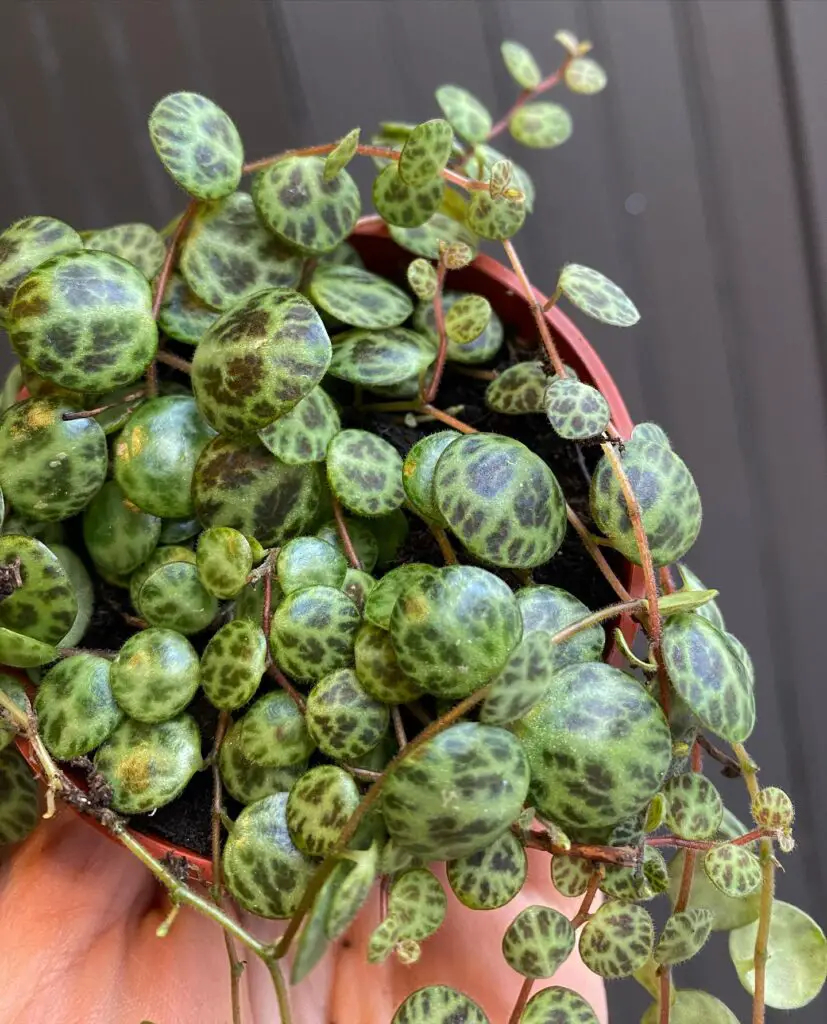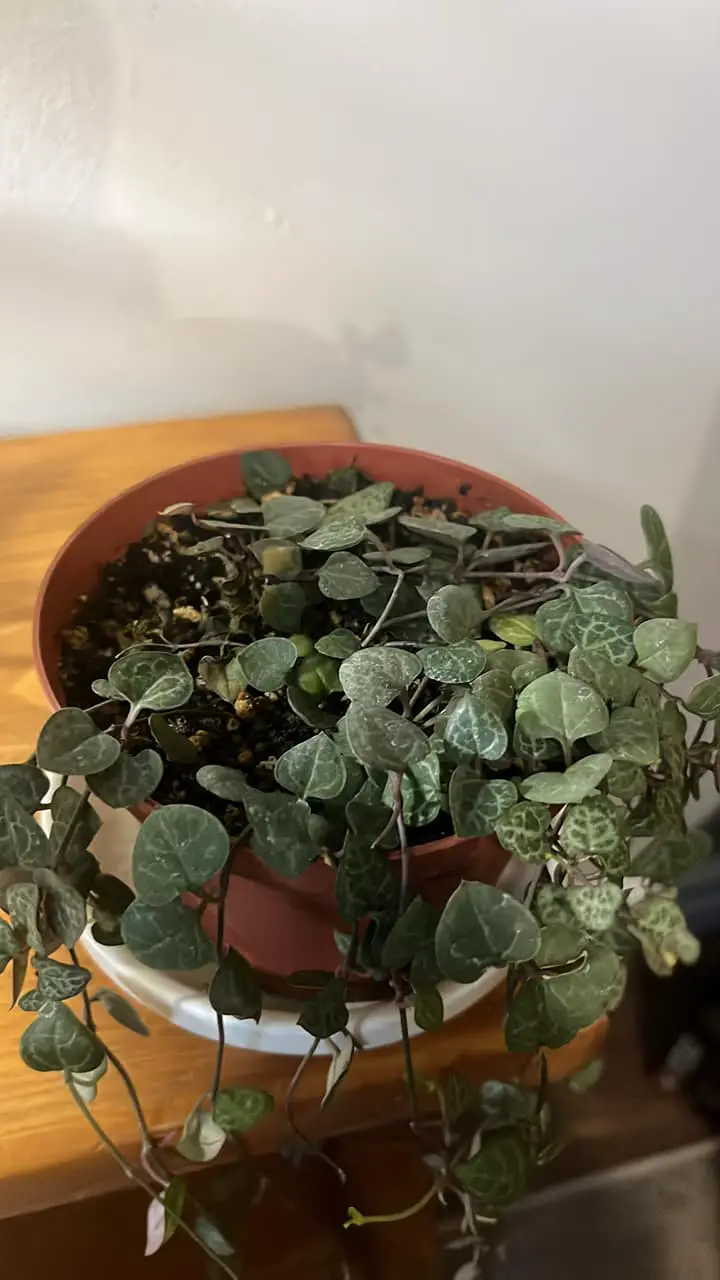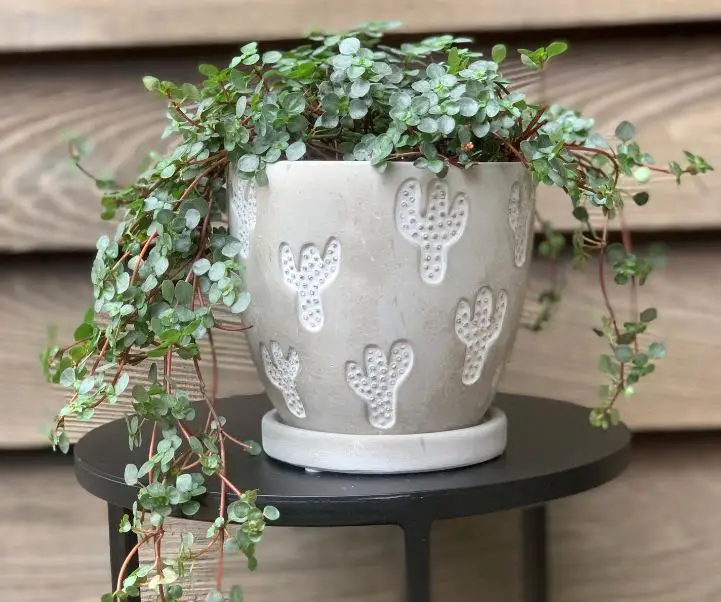The Dos and Don’ts of Growing String of Turtles Houseplant
String of turtles (Peperomia prostrata) is one of the plants I’m completely obsessed with. This cutie has a very attractive leaf shape that makes it look like the shell of tiny turtles strung together. It’s an excellent choice for spaces like desktops and hanging baskets.
But how do you go about planting and maintaining this small cascading plant? First, I want to assure you that caring for a string of turtles is pretty easy. However, unlike what you know about other succulents, Peperomia prostrata has slightly unique needs.
Originating from the Brazilian rainforests, the String of Turtles is well-adapted to the humid nutrient-rich environments found under the forest canopy. Growing it as a houseplant, you will need to mimic these conditions in their natural habitat.
Basic info about String of turtles plant
| Botanical name | Peperomia prostrata |
| Common name | String of Turtles |
| Plant type | Succulent |
| Mature size | 12-15 inches |
| Sun exposure | Bright indirect light |
| Soil type | Moist, neutral to acidic pH |
| Hardiness zone | 10 to 12, USDA |
| Toxicity | Non-toxic to both cats and dogs |
How to care for the String of turtles houseplant
As I said, the String of turtles is relatively easy to plant and grow. It is ideal for both novice and experienced gardeners. What you should know is that this plant is a slow grower and can take years to reach its mature size. Here are some of the important things to do.
Use rich and slightly acidic soil
For most succulent growers, it’s a tradition to use pre-made mixes. This won’t be a good idea when planting the string of turtles. It’s recommended to use a relatively acidic soil mix. Your best bet is to include some organic matter like peat or a well-decomposed compost.
To ensure good drainage while also retaining consistent moisture, you should also add small bits of pumice, or gravel. Test the soil every often to ensure an optimum pH. You may also fertilize once per year at the start of the growing season with a diluted, balanced fertilizer.
Keep the soil consistently moist
The string of turtles prefers moist soil, particularly during the growing seasons. Bottom watering is highly recommended especially during the winter months. Remember to give the soil some time to dry before watering again to prevent overwatering.
Provide bright indirect light
Keep your string of turtles in a spot with bright indirect light. Keeping this plant in full sun can cause discoloration or damage to the leaves. When light is not sufficient it is common to see Peperomia prostrata growing spindly with leaves getting sparsely spaced.
In places with insufficient sunlight, use artificial grow lights to supplement the natural light. If sunlight is too much, move your plant to a shaded area.
Keep temperatures cooler
The string of turtles prefers cooler temperatures than most succulents. This plant will be comfortable in average room temperature. When growing it indoors, aim for 18 to 29 degrees Celsius (64 to 84 Fahrenheit).
High temperatures may cause heat stress. You may want to use a mister or humidifier when a heater is running. You also have to be careful when temperatures become too cold. A significant low can cause leaf drop.
Prune regularly for new growth
Pruning regularly can help your string of turtles grow more vigorous. If you don’t prune, the plant may grow unkempt, leggy, or ragged. Make sure to use sharp and sanitized pruning shears or a clean pair of scissors.
Remember to prune only during the growing season in spring. You may save some of the healthy cuttings for propagation.
How to propagate the String of turtles plant
The most popular way to propagate String of Turtles is by cuttings. It is a fairly easy and rewarding process. Here is how to do it:
- Choose a healthy, mature stem. Make sure the stem is free from any damage or disease.
- Using a clean, sharp pair of scissors or pruning shears, cut a section of the stem about 4–6 inches long.
- Carefully remove the leaves from the lower 2–3 inches of the cutting.
- Place the cutting in a glass of water ensuring the area where the leaves are removed is fully submerged.
- place the cutting in bright, indirect light.
- Change the water every few days to keep it fresh.
- After about 2-4 weeks, you should start seeing roots forming.
- Once the roots are well-developed, transplant the cutting into the soil.
You can also root the cutting directly in the soil. If you prefer this method, plant it in a small pot with well-draining soil. Water the soil lightly, and keep the pot in a warm spot with bright indirect sunlight. Keep the soil consistently moist but not soggy and the cutting should root in 2-4 weeks.
Diseases and common problems
Like the rest of Peperomia plants, String of turtles is pretty resistant to most pests and diseases. However, plants without regular inspection can get infested by insect pests such as mealybugs, spider mites, and other scale insects.
Overwatering is also a leading cause of root rot and other fungal problems. It’s important to let the soil dry out between your waterings more so during winter. Yellowing, leaf drop, discoloration, and slower growth show that your plant needs special attention.
In a nutshell, here are the don’ts of growing the string of turtles indoors:
- Don’t overwater nor allow waterlogging. This can lead to root rot.
- Don’t place your plant in low-light conditions. This will cause weakened and leggy growth.
- Don’t use a premade succulent or cacti mix. Use a slightly acidic growth media preferably one rich in compost or peat.
- Don’t place the plant in drafty areas or near windows that let in cold air during the winter.
- Don’t overfertilize as too much fertilizer can lead to leggy growth or burn the roots.
- Don’t ignore pests because if not treated they can damage or kill your plant.
- Don’t overcrowd your plants as it can block light, limit airflow, and encourage mold or mildew to form.
Final thought
The string of turtles is a unique plant to add to any collection. Its care and maintenance needs are low and both beginner and experienced gardeners can easily plant and grow this beautiful succulent. Your best bet is to mimic the conditions in its natural habitats.
Tim M Dave is a gardening expert with a passion for houseplants, particularly cacti and succulents. With a degree in plant biology from the University of California, Berkeley, he has vast experience in gardening. Over the years, he has cultivated a vast collection of desert plants and learned a great deal about how to grow and care for these unique companions.






